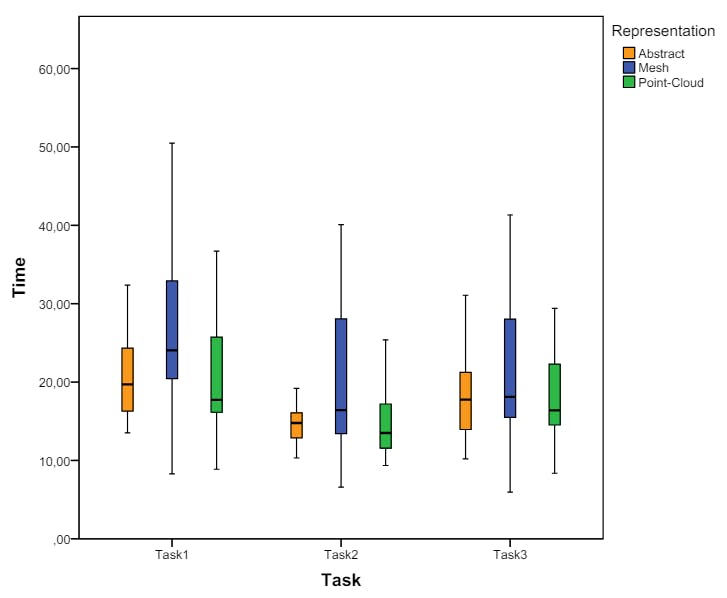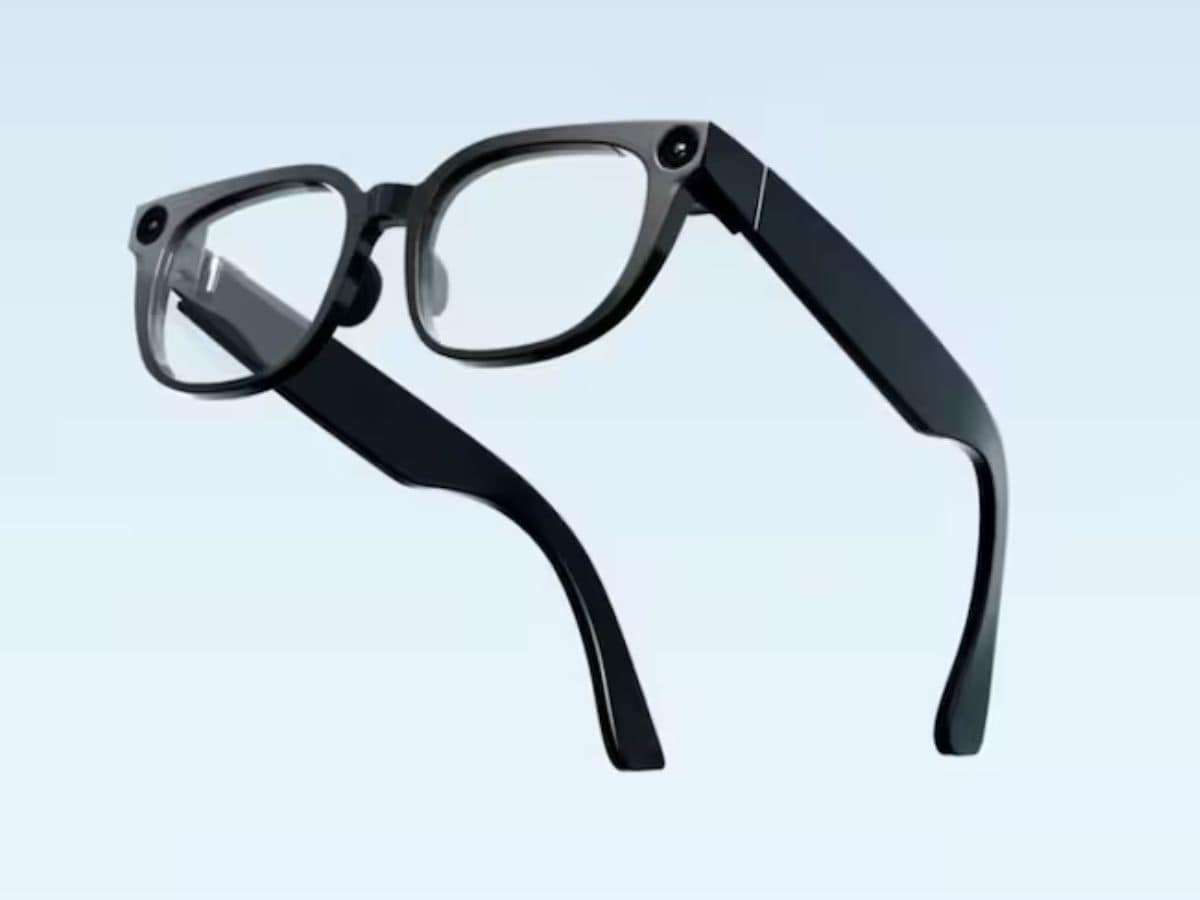Authors:
(1) Rafael Kuffner dos Anjos;
(2) Joao Madeiras Pereira.
Table of Links
Abstract and 1 Introduction
2 Related Work and 2.1 Virtual avatars
2.2 Point cloud visualization
3 Test Design and 3.1 Setup
3.2 User Representations
3.3 Methodology
3.4 Virtual Environment and 3.5 Tasks Description
3.6 Questionnaires and 3.7 Participants
4 Results and Discussion, and 4.1 User preferences
4.2 Task performance
4.3 Discussion
5 Conclusions and References
5 CONCLUSIONS
The use of Head-Mounted Displays occludes the user’s self, causing a decrease in the feeling of presence on the Virtual Reality session.A way of overcoming this problem is by using self-embodied avatars which improve presence and overall distance estimation in VR setups. Some factors that could influence the sense of embodiment are the realism and perspective which the avatar is viewed (in First or Third-Person Perspective). The realism of avatars are affected by the Uncanny Valley which also influence self-embodied avatars. Even though, the effects of both realism and perspective are not yet fully adressed in the literature when it comes to selfembodied avatars. For that we used three different representations varying its realism in both perspectives (1PP and 3PP) following the Uncanny Valley effect, varying from an Abstract to a Realistic Representation. For the Realistic representation we used a Point-Cloud Avatar, which uses affordable depth-sensors to map real users’ information into a user augmented-self inside the Virtual Environment. To assess each of the representation-perspective combinations, we chose natural tasks such as walking while avoiding obstacles and catching thrown objects.
As a result of the statistical analysis, discussion and evaluation of the results, we propose the following guidelines regarding body representation and camera perspective for embodied virtual reality applications:
• The uncanny valley effect is more prevalent on the third person perspective, and it influences the time efficiency of navigation tasks.
• On a First-Person Perspective (1PP), the Uncanny Valley Effect is only noticed on tasks where a higher sense of embodiment is required (eg. reflex-based tasks).
• To avoid the Uncanny Valley Effect, one should use either a simplified (Abstract) or a Realistic (Point-Cloud) representation of the participant.
• Using a more realistic representation (Point-Cloud) and Perspective (1PP) can lead to faster execution times, but lower efficacy on the execution of tasks.
• A Third-Person Perspective is recommended when spatial awareness on the horizontal navigation plane is required, with a slight advantage when using a Realistic Representation.
• Obstacle avoidance and reaching moving objects can be problematic when using a Realistic representation due to occlusions created by the visually richer representation.
• The users’ sense of balance is negatively affected by a ThirdPerson Perspective.
• Reflex-based tasks have better performance when using a First-Person Perspective.
However, we were not able to clarify certain aspects investigated in this study. Namely, avoiding obstacles in the vertical plane, and how the poor estimation of distance can influence these tasks, and if the body representation has any effect on this matter. Also, the effect of the Uncanny Valley on reflex-based tasks was noticed, but requires further evaluation using different stimuli.
Going forward, different tasks should be considered for the same perspectives and avatars, such as collaboration between different users, social environments, and communicative tasks.
REFERENCES
[1] M. Alexa, J. Behr, D. Cohen-Or, S. Fleishman, D. Levin, and C. T. Silva. Computing and rendering point set surfaces. Visualization and Computer Graphics, IEEE Transactions on, 9(1):3–15, Jan 2003.
[2] D. Bonatto, S. Rogge, A. Schenkel, R. Ercek, and G. Lafruit. Explorations for real-time point cloud rendering of natural scenes in virtual reality. In 2016 International Conference on 3D Imaging (IC3D), pages 1–7, Dec 2016.
[3] M. Botsch, A. Hornung, M. Zwicker, and L. Kobbelt. High-Quality Surface Splatting on Today’s GPUs. In M. Alexa, S. Rusinkiewicz, M. Pauly, and M. Zwicker, editors, Eurographics Symposium on PointBased Graphics (2005). The Eurographics Association, 2005.
[4] M. Botsch, A. Wiratanaya, and L. Kobbelt. Efficient high quality rendering of point sampled geometry. In Proceedings of the 13th Eurographics Workshop on Rendering, EGRW ’02, pages 53–64, Aire-laVille, Switzerland, Switzerland, 2002. Eurographics Association.
[5] M. Botvinick, J. Cohen, et al. Rubber hands’ feel’touch that eyes see. Nature, 391(6669):756–756, 1998.
[6] R. Boulic, D. Maupu, and D. Thalmann. On scaling strategies for the full-body postural control of virtual mannequins. Interacting with Computers, 21(1):11–25, 2009.
[7] H. G. Debarba, E. Molla, B. Herbelin, and R. Boulic. Characterizing embodied interaction in first and third person perspective viewpoints. In 3D User Interfaces (3DUI), 2015 IEEE Symposium on, pages 67– 72. IEEE, 2015.
[8] M. Dou, S. Khamis, Y. Degtyarev, P. Davidson, S. R. Fanello, A. Kowdle, S. O. Escolano, C. Rhemann, D. Kim, J. Taylor, P. Kohli, V. Tankovich, and S. Izadi. Fusion4d: Real-time performance capture of challenging scenes. ACM Trans. Graph., 35(4):114:1–114:13, July 2016.
[9] H. H. Ehrsson. The experimental induction of out-of-body experiences. Science, 317(5841):1048–1048, 2007.
[10] R. Fabio et al. From point cloud to surface: the modeling and visualization problem. International Archives of Photogrammetry, Remote Sensing and Spatial Information Sciences, 34(5):W10–w10, 2003.
[11] M. Gopi, S. Krishnan, and C. Silva. Surface reconstruction based on lower dimensional localized delaunay triangulation. Computer Graphics Forum, 19(3):467–478, 2000.
[12] M. Gopi, S. Krishnan, and C. T. Silva. Surface reconstruction based on lower dimensional localized delaunay triangulation. In Computer Graphics Forum, volume 19, pages 467–478, 2000.
[13] V. Interrante, B. Ries, and L. Anderson. Distance perception in immersive virtual environments, revisited. In IEEE Virtual Reality Conference (VR 2006), pages 3–10. IEEE, 2006.
[14] S. Katz, A. Tal, and R. Basri. Direct visibility of point sets. ACM Trans. Graph., 26(3), July 2007.
[15] M. Kazhdan, M. Bolitho, and H. Hoppe. Poisson surface reconstruction. In Proceedings of the Fourth Eurographics Symposium on Geometry Processing, SGP ’06, pages 61–70, Aire-la-Ville, Switzerland, Switzerland, 2006. Eurographics Association.
[16] K. Kilteni, R. Groten, and M. Slater. The sense of embodiment in virtual reality. Presence: Teleoperators and Virtual Environments, 21(4):373–387, 2012.
[17] T. Kosch, R. Boldt, M. Hoppe, P. Knierim, and M. Funk. Exploring the optimal point of view in third person out-of-body experiences. In Proccedings of 10th International Conference on Pervasive Technologies Related to Assistive Environments (PETRA 2016). ACM, 2016.
[18] B. Lenggenhager, M. Mouthon, and O. Blanke. Spatial aspects of bodily self-consciousness. Consciousness and cognition, 18(1):110– 117, 2009.
[19] J.-L. Lugrin, J. Latt, and M. E. Latoschik. Avatar anthropomorphism and illusion of body ownership in vr. In 2015 IEEE Virtual Reality (VR), pages 229–230. IEEE, 2015.
[20] J.-L. Lugrin, M. Wiedemann, D. Bieberstein, and M. E. Latoschik. Influence of avatar realism on stressful situation in vr. 2015 IEEE Virtual Reality (VR), pages 227–228, 2015.
[21] M. Mori, K. F. MacDorman, and N. Kageki. The uncanny valley [from the field]. IEEE Robotics & Automation Magazine, 19(2):98–100, 2012.
[22] L. Piwek, L. S. McKay, and F. E. Pollick. Empirical evaluation of the uncanny valley hypothesis fails to confirm the predicted effect of motion. Cognition, 130(3):271–277, 2014.
[23] R. Preiner, S. Jeschke, and M. Wimmer. Auto splats: Dynamic point cloud visualization on the gpu. In EGPGV, pages 139–148, 2012.
[24] R. S. Renner, B. M. Velichkovsky, and J. R. Helmert. The perception of egocentric distances in virtual environments-a review. ACM Computing Surveys (CSUR), 46(2):23, 2013.
[25] C. Ribeiro, R. Kuffner, C. Fernandes, and J. a. Pereira. 3d annotation in contemporary dance: Enhancing the creation-tool video annotator. In Proceedings of the 3rd International Symposium on Movement and Computing, MOCO ’16, New York, NY, USA, 2016. Association for Computing Machinery.
[26] B. Ries, V. Interrante, M. Kaeding, and L. Anderson. The effect of self-embodiment on distance perception in immersive virtual environments. In Proceedings of the 2008 ACM symposium on Virtual reality software and technology, pages 167–170. ACM, 2008.
[27] S. Rusinkiewicz and M. Levoy. Qsplat: A multiresolution point rendering system for large meshes. In Proceedings of the 27th Annual Conference on Computer Graphics and Interactive Techniques, SIGGRAPH ’00, pages 343–352, New York, NY, USA, 2000. ACM Press/Addison-Wesley Publishing Co.
[28] P. Salamin, T. Tadi, O. Blanke, F. Vexo, and D. Thalmann. Quantifying effects of exposure to the third and first-person perspectives in virtualreality-based training. IEEE Transactions on Learning Technologies, 3(3):272–276, 2010.
[29] M. V. Sanchez-Vives, B. Spanlang, A. Frisoli, M. Bergamasco, and M. Slater. Virtual hand illusion induced by visuomotor correlations. PloS one, 5(4):e10381, 2010.
[30] M. Slater, D. Perez Marcos, H. Ehrsson, and M. V. Sanchez-Vives. ´ Towards a digital body: the virtual arm illusion. Frontiers in human neuroscience, 2:6, 2008.
[31] M. Slater, B. Spanlang, and D. Corominas. Simulating virtual environments within virtual environments as the basis for a psychophysics of presence. ACM Transactions on Graphics (TOG), 29(4):92, 2010.
[32] M. Slater and M. Usoh. Body centred interaction in immersive virtual environments. Artificial life and virtual reality, 1:125–148, 1994.
[33] L. A. Westover. Splatting: a parallel, feed-forward volume rendering algorithm. PhD thesis, University of North Carolina at Chapel Hill, 1991.
[34] Y. Yuan and A. Steed. Is the rubber hand illusion induced by immersive virtual reality? In 2010 IEEE Virtual Reality Conference (VR), pages 95–102. IEEE, 2010.
[35] M. Zwicker, J. Rasanen, M. Botsch, C. Dachsbacher, and M. Pauly. ¨ Perspective accurate splatting, 2004.












